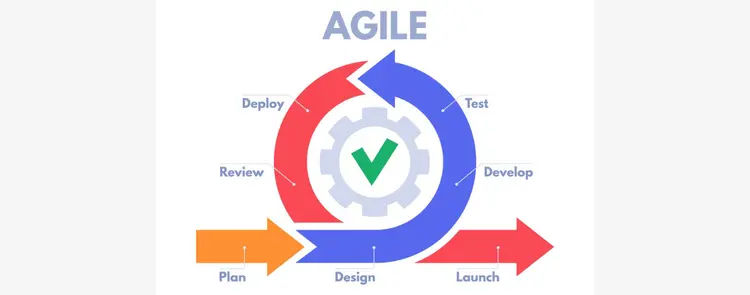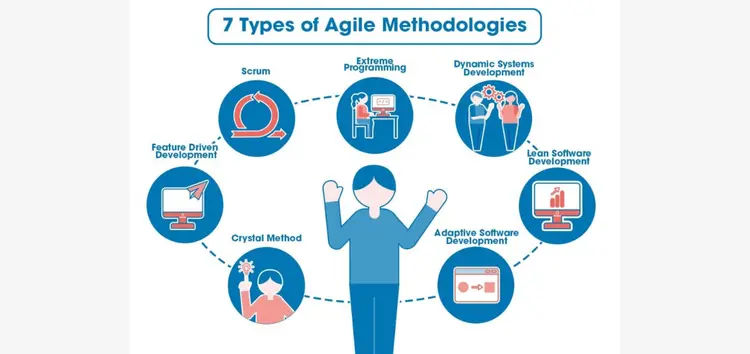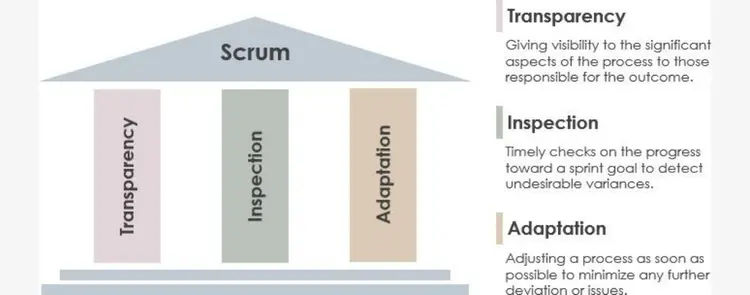- Blog Categories
- Project Management
- Agile Management
- IT Service Management
- Cloud Computing
- Business Management
- Business Intelligence
- Quality Engineer
- Cyber Security
- Career
- Big Data
- Programming
- Most Popular Blogs
- PMP Exam Schedule for 2024: Check PMP Exam Date
- Top 60+ PMP Exam Questions and Answers for 2024
- PMP Cheat Sheet and PMP Formulas To Use in 2024
- What is PMP Process? A Complete List of 49 Processes of PMP
- Top 15+ Project Management Case Studies with Examples 2024
- Top Picks by Authors
- Top 170 Project Management Research Topics
- What is Effective Communication: Definition
- How to Create a Project Plan in Excel in 2024?
- PMP Certification Exam Eligibility in 2024 [A Complete Checklist]
- PMP Certification Fees - All Aspects of PMP Certification Fee
- Most Popular Blogs
- CSM vs PSM: Which Certification to Choose in 2024?
- How Much Does Scrum Master Certification Cost in 2024?
- CSPO vs PSPO Certification: What to Choose in 2024?
- 8 Best Scrum Master Certifications to Pursue in 2024
- Safe Agilist Exam: A Complete Study Guide 2024
- Top Picks by Authors
- SAFe vs Agile: Difference Between Scaled Agile and Agile
- Top 21 Scrum Best Practices for Efficient Agile Workflow
- 30 User Story Examples and Templates to Use in 2024
- State of Agile: Things You Need to Know
- Top 24 Career Benefits of a Certifed Scrum Master
- Most Popular Blogs
- ITIL Certification Cost in 2024 [Exam Fee & Other Expenses]
- Top 17 Required Skills for System Administrator in 2024
- How Effective Is Itil Certification for a Job Switch?
- IT Service Management (ITSM) Role and Responsibilities
- Top 25 Service Based Companies in India in 2024
- Top Picks by Authors
- What is Escalation Matrix & How Does It Work? [Types, Process]
- ITIL Service Operation: Phases, Functions, Best Practices
- 10 Best Facility Management Software in 2024
- What is Service Request Management in ITIL? Example, Steps, Tips
- An Introduction To ITIL® Exam
- Most Popular Blogs
- A Complete AWS Cheat Sheet: Important Topics Covered
- Top AWS Solution Architect Projects in 2024
- 15 Best Azure Certifications 2024: Which one to Choose?
- Top 22 Cloud Computing Project Ideas in 2024 [Source Code]
- How to Become an Azure Data Engineer? 2024 Roadmap
- Top Picks by Authors
- Top 40 IoT Project Ideas and Topics in 2024 [Source Code]
- The Future of AWS: Top Trends & Predictions in 2024
- AWS Solutions Architect vs AWS Developer [Key Differences]
- Top 20 Azure Data Engineering Projects in 2024 [Source Code]
- 25 Best Cloud Computing Tools in 2024
- Most Popular Blogs
- Company Analysis Report: Examples, Templates, Components
- 400 Trending Business Management Research Topics
- Business Analysis Body of Knowledge (BABOK): Guide
- ECBA Certification: Is it Worth it?
- How to Become Business Analyst in 2024? Step-by-Step
- Top Picks by Authors
- Top 20 Business Analytics Project in 2024 [With Source Code]
- ECBA Certification Cost Across Countries
- Top 9 Free Business Requirements Document (BRD) Templates
- Business Analyst Job Description in 2024 [Key Responsibility]
- Business Analysis Framework: Elements, Process, Techniques
- Most Popular Blogs
- Best Career options after BA [2024]
- Top Career Options after BCom to Know in 2024
- Top 10 Power Bi Books of 2024 [Beginners to Experienced]
- Power BI Skills in Demand: How to Stand Out in the Job Market
- Top 15 Power BI Project Ideas
- Top Picks by Authors
- 10 Limitations of Power BI: You Must Know in 2024
- Top 45 Career Options After BBA in 2024 [With Salary]
- Top Power BI Dashboard Templates of 2024
- What is Power BI Used For - Practical Applications Of Power BI
- SSRS Vs Power BI - What are the Key Differences?
- Most Popular Blogs
- Data Collection Plan For Six Sigma: How to Create One?
- Quality Engineer Resume for 2024 [Examples + Tips]
- 20 Best Quality Management Certifications That Pay Well in 2024
- Six Sigma in Operations Management [A Brief Introduction]
- Top Picks by Authors
- Six Sigma Green Belt vs PMP: What's the Difference
- Quality Management: Definition, Importance, Components
- Adding Green Belt Certifications to Your Resume
- Six Sigma Green Belt in Healthcare: Concepts, Benefits and Examples
- Most Popular Blogs
- Latest CISSP Exam Dumps of 2024 [Free CISSP Dumps]
- CISSP vs Security+ Certifications: Which is Best in 2024?
- Best CISSP Study Guides for 2024 + CISSP Study Plan
- How to Become an Ethical Hacker in 2024?
- Top Picks by Authors
- CISSP vs Master's Degree: Which One to Choose in 2024?
- CISSP Endorsement Process: Requirements & Example
- OSCP vs CISSP | Top Cybersecurity Certifications
- How to Pass the CISSP Exam on Your 1st Attempt in 2024?
- Most Popular Blogs
- Best Career options after BA [2024]
- Top Picks by Authors
- Top Career Options & Courses After 12th Commerce in 2024
- Recommended Blogs
- 30 Best Answers for Your 'Reason for Job Change' in 2024
- Recommended Blogs
- Time Management Skills: How it Affects your Career
- Most Popular Blogs
- Top 28 Big Data Companies to Know in 2024
- Top Picks by Authors
- Top Big Data Tools You Need to Know in 2024
- Most Popular Blogs
- Web Development Using PHP And MySQL
- Top Picks by Authors
- Top 30 Software Engineering Projects in 2024 [Source Code]
- More
- Tutorials
- Practise Tests
- Interview Questions
- Free Courses
- Agile & PMP Practice Tests
- Agile Testing
- Agile Scrum Practice Exam
- CAPM Practice Test
- PRINCE2 Foundation Exam
- PMP Practice Exam
- Cloud Related Practice Test
- Azure Infrastructure Solutions
- AWS Solutions Architect
- AWS Developer Associate
- IT Related Pratice Test
- ITIL Practice Test
- Devops Practice Test
- TOGAF® Practice Test
- Other Practice Test
- Oracle Primavera P6 V8
- MS Project Practice Test
- Project Management & Agile
- Project Management Interview Questions
- Release Train Engineer Interview Questions
- Agile Coach Interview Questions
- Scrum Interview Questions
- IT Project Manager Interview Questions
- Cloud & Data
- Azure Databricks Interview Questions
- AWS architect Interview Questions
- Cloud Computing Interview Questions
- AWS Interview Questions
- Kubernetes Interview Questions
- Web Development
- CSS3 Free Course with Certificates
- Basics of Spring Core and MVC
- Javascript Free Course with Certificate
- React Free Course with Certificate
- Node JS Free Certification Course
- Data Science
- Python Machine Learning Course
- Python for Data Science Free Course
- NLP Free Course with Certificate
- Data Analysis Using SQL
What are the Types of Agile Methodologies?
By Geethalakshmi Radhakrishnan
Updated on Mar 26, 2025 | 20 min read | 17.4k views
Share:
Table of Contents
The Agile methodologies and technique divides a project into many parts and uses these phases to manage the project. Continuous improvement at every stage and ongoing collaboration with stakeholders is required. Teams cycle through a process of planning, carrying out, and assessing once the job starts. Apart from the sections that follow, you can learn the various types of agile methodology by joining any of the Agile Management training courses on our platform. So let us get started.
What are Agile Methodologies?

Insider Tips to Land Your Dream Scrum Master Job
Includes Scrum Resume Sample

There are more than a dozen agile techniques that are in use. Scrum, Extreme Programming (XP), lean product development, Kanban, Feature-Driven Development (FDD), Dynamic Systems Development Method (DSDM), and the Crystal family of methodologies are the most popular approaches. We'll go into detail about each of these types of agile methodologies in the discussion. Scrum and XP are the two most popular agile methodologies. The core concepts, people, activities, and deliverables of these two strategies will be thoroughly covered. To learn more in detail, please go through the various agile courses listed in the KnowledgeHut Agile Management training.
Types of Agile Methodology: Important Categories

Free Management Library
1. Scrum
Scrum is a well-known agile framework that is simple to learn and lightweight, but like all agile techniques, it is challenging to master completely. The "Scrum framework" contains a collection of processes, roles, events, artifacts, and rules that are intended to direct the team as they carry out the project.
Scrum Pillars and Values

visual
In addition to the three pillars, Scrum also recognizes five fundamental values:

The major concepts and elements of the scrum are discussed in this section, as well as the responsibilities of a scrum team, the activities that take place during a sprint, and the sprint deliverables or artifacts.
I. Scrum Team Roles
Developers, product owners, and scrum masters make up multidisciplinary scrum teams.
- Developers: team of self-organizing experts who construct the product increments during each sprint.
- Product Owner: oversees managing the product backlog, or the list of tasks that need to be completed, to maximize the value of the product.
- Scrum Master: the facilitator of the scrum process acting as a servant leader and protector of the team and scrum values.
II. Scrum Events
Five "events," or meetings targeted at a particular goal, are defined under the Scrum framework, these are:
Sprints: A sprint is an iteration that is time-boxed that lasts typically one to two weeks, during which the team creates a viable product for release.
Backlog Refinement: "Grooming the backlog" takes place at the backlog refinement meetings. This indicates that all project participants meet to go over and revise the backlog terms to meet readiness of backlog items.
Sprint Planning: Everyone attends the sprint planning meeting to decide what will be delivered during the forthcoming sprint and how that work will be accomplished.
Daily Scrum: A 15-minute time-boxed meeting, held at the same time and location every day, with the purpose of getting a succinct response to three questions about the sprint goal.
- What has one accomplished since the previous daily scrum?
- What are your plans for the day?
- Are there any obstacles in my way?
Sprint Review: Held towards the end of the sprint along with other potential stakeholders, the team gives a demo of the increment product they developed during the sprint.
Sprint Retrospective: The development team holds the sprint retrospective, which is the final "inspect and adapt" activity for the sprint, to reflect on their experiences and seek areas where they may do better.
III. Scrum Artifacts
We'll talk about the Scrum artifacts now that we've covered the Scrum roles and activities. These are:
Product Increment: is the mutually agreed definition of done between the team and PO to have a common understanding of how the increment can be marked complete and acceptable.
Product Backlog: is the prioritized list of all work to be done to build the product and accomplish project objectives.
Sprint Backlog: is the portion of the product backlog that has been chosen as the objective of a particular sprint.
Anyone who would like to understand the practical concept of Scrum can join KnowledgeHut agile management training courses.
2. Extreme Programming (XP)
Extreme Programming, sometimes known as "XP" or "eXtreme Programming," is an agile approach that is concentrated on software development.
XP Core Values: Core values of XP include communication, simplicity, feedback, courage, and respect that help imbibe agility in teams and organization.

XP Team Roles: In contrast to Scrum, XP specifies the team roles as coach, customer, and tester. Let's examine the contributions that each of these jobs makes to an XP project.
- Coach: The coach serves as the team's mentor, directing the process and assisting the members in staying on task and has many duties in common with a ScrumMaster.
- Customer: The "customer" is the business core of the XP team. which might give the project's needs, priorities, and business direction, similar to the Scrum product owner.
- Programmers: Are the developers who write and implement the programming for the requested user stories.
- Testers: The customer can define and write acceptance tests for the user stories with the assistance of the testers or programmers, who also provide quality assurance.
Planning Games: Release planning and iteration planning are the two main planning games used in XP. The customer specifies the functionality needed during planning, the team then estimates using these inclusive games, as to how challenging it will be to construct that functionality.
Small Releases: In XP, it is recommended to make frequent, short releases to a test environment, both at the iteration level to show progress and boost customer visibility and at the release level to quickly provide functional software to the end users.
Customer Tests: The customer specifies one or more test criteria, and the team then creates automated tests to demonstrate to both the team and the client that the program satisfies user requirements.
Collective Code Ownership: involves more individuals to work on all code adding expertise, removing errors, and introducing higher quality of delivery and cross-functional skill development.
Code Standards: involves adapting a consistent coding style and strategy to maintain uniformity and avoid changes due to varied coding patterns/practices.
Sustainable Pace: The best degree of productivity is attained by a team working at a sustainable pace, not long tiring hours.
Metaphor: To describe designs and establish a common technical vision, Metaphor XP employs metaphors and similes - descriptions that help create comparisons that are clear to all parties involved and aid in illustrating how the system ought to operate.
Continuous integration: XP uses continuous integration i.e. frequent chunks of tests which compile code and bring functions together to avoid building or adding code on incompatible code/patterns and discovering issues early.
Test-Driven Development: This crucial component of the XP technique involves authoring acceptance tests before creating the new code, which fail when the code has not been created and vice-versa, thereby, helping to reduce the test-feedback cycle as much as feasible.
Refactoring: Refactoring involves enhancing the design of already-written code without changing how it functions externally or introducing new features. It is focused on reducing coupling, eliminating redundant code, and boosting cohesiveness.
Simple Design: XPs can create code rapidly and modify it as needed by concentrating on maintaining a simple but adequate design. Simple design is also a risk-reduction tactic, as it has been shown that code bloat and complexity are associated with many unsuccessful initiatives.
Pair Programming: In XP, two developers collaborate to write production code. The other developer reviews the code as it is developed while one developer develops it; their responsibilities regularly swap. Working in pairs also aids in transferring system expertise throughout the team.
3. Lean Product Development
Lean primarily a manufacturing strategy, was subsequently extended to software development, and many other types of knowledge work. Lean product development a branch of lean, focuses on creating new and improved goods, based on the below tenets:
- Using visual management tools
- Identifying customer-defined value
- Building in learning and continuous improvement
Lean Core Concepts - Lean focuses on seven core concepts, as given below:
Eliminate waste: We must reduce waste if we are to maximize value. Waste can appear in knowledge work as incomplete work, delays, handoffs, superfluous features, etc. which need to be eliminated, if we want to maximize the value we derive from projects.
Empower the team: Rather than micromanaging, we should recognize the team members' greater understanding of the technical procedures necessary for the project and allow them to make local judgments to be effective and successful.
Deliver as soon as possible: By generating worthwhile deliverables as soon as possible and refining designs, we may increase the project's return on investment (ROI). Through the quick evolution of possibilities, we will find the best answer.
Optimize the system: We want to recognize that a system is greater than its components' sum. We examine the project's parts to see how it fits with the company. We also put a lot of effort into creating better intergroup relations as part of optimizing the entire.
Build quality in: Lean development uses methods like refactoring, continuous integration, and unit testing to continuously ensure quality throughout the development process rather than trying to "test in" quality at the end.
Defer decisions: Making judgments and commitments as late as possible is balanced with early planning. This can entail, for instance, revising the backlog's priorities just before starting the work or avoiding being forced to use an early, technologically constrained solution.
Amplify learning: This idea calls for encouraging early and frequent contact, obtaining feedback as quickly as feasible, and building on what we discover. We should start early and never stop learning since knowledge work initiatives are business and technological learning opportunities.
4. Feature-Driven Development (FDD)
FDD (Feature-Driven Development) is an easy-to-understand but effective method for creating products or solutions. A project team using the FDD methodology will first create a general model of the product, create a list of features, then schedule the work to eventually go through the design and construction stages. FDD suggests a collection of best practices that were inspired by software engineering. Among them are
Domain object modeling: Teams study and describe the domain (or business environment) of the problem to be solved in this exercise. Developing by feature entails dividing tasks into two-week or smaller chunks of labor, which are then referred to as features.
Individual class (code) ownership: This technique assigns a single owner to a section of code for conceptual coherence, performance, and consistency.
Feature teams: These are compact, spontaneously assembled teams that vet designs and enable the evaluation of several design choices before the selection of a design reducing the hazards connected with individual ownership.
Inspections: These are checks to make sure the design and code are of high quality.
Configuration management: This entails labeling code, keeping track of modifications, and controlling source code.
Regular builds: The team ensures that the new code works with the current code through regular builds to keep the team up to date for user demos.
Results and progress visibility: Visual information radiators such as the cumulative flow diagrams and parking lot diagrams help effective tracking and visibility of team progress and associated metrics.
5. Dynamic Systems Development Method (DSDM)
One of the first agile methodologies was called DSDM, and it had a very precise and prescriptive beginning. The DSDM life cycle is depicted in the picture below.
There are eight guiding concepts for DSDM, viz:
- Focus on the business need
- Deliver on time
- Collaborate
- Never compromise quality
- Build incrementally from firm foundations
- Develop iteratively
- Communicate continuously and clearly
- Demonstrate control
By promoting early architectural considerations, agile appropriateness criteria, and agile contracts, DSDM has influenced the growth of agile.
6. Kanban
Kanban is a well-known Lean workflow management methodology for designing, monitoring, and enhancing information work delivery offerings. It enables you to visualize your job, increase productivity, and continuously get better.
Kanban Board - Teams may easily visualize and manage their operations using Kanban boards by using Card, columns, Swim lanes, and WIP Limits. They can help you visualize additional aspects of your workflow, such as process regulations (instructions for utilizing the board) and work-in-process (WIP) ceilings, in addition to the steps in your workflow.
Kanban System - The term "Kanban system" refers to the management of work, enhancement of workflow, and continuous improvement methodology employing Kanban boards and cards to help teams work faster and more effectively.
7. Crystal
Crystal isn't just one technique; it's a family of tailored, situation-specific approaches that are color-coded. Crystal can handle a wide range of projects, from a small team developing a low-criticality system (Crystal Clear) to a large team developing a high-criticality system, thanks to the customization of each technique by criticality and team size (Crystal Magenta).
A fantastic illustration of how agile approaches may be modified to accommodate the unique qualities of a project is the Crystal framework. The first five "colors" (methodologies) of the crystal, for instance, are depicted in the figure below.

8. SAFe
The top business agility framework in the world is SAFe for Lean Enterprises. SAFe is a type of agile methodology that combines the strength of Lean, Agile, and DevOps into an all-encompassing operating system that aids businesses in thriving in the digital age by producing cutting-edge goods and services more quickly, predictably, and of higher quality.
SAFe's business advantages
SAFe provides a multitude of advantages such as coordinated and organized delivery processes, better control for larger projects. Any project manager or product manager who would like to increase their grip on the SAFe concept can join KnowledgeHut’s Agile Management training courses.
Unlock your potential with our certified Project Management training. Our online course is designed to help you elevate your skills and take your career to new heights. Enroll today and start your journey towards success!
Delve into the most popular Agile Category Courses
Conclusion
The Agile Development technique is a revamped method of creating software products that emphasizes adaptability and speed. Agile generates crucial metrics, such as lead time, cycle time, and throughput, which assist in assessing the performance of the team, locating bottlenecks, and making data-driven decisions to address them.
Iterative software development is the foundation of agile methods. The end of an iteration results in the construction of an autonomous operational module. All the above-discussed types of agile methodology through their innovative techniques and concepts that allow a team to quickly produce a product, agile approaches are suitable for changing circumstances.
Frequently Asked Questions (FAQs)
1. What is the most popular Agile methodology?
2. What are the 3 key elements of Agile methodology?
3. What are the 3 stages of agile planning?
Get Free Consultation
By submitting, I accept the T&C and
Privacy Policy
Ready to lead with Scrum expertise?
